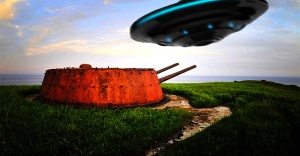A set of Egyptian hieroglyphs discovered in Australia is an uncomfortable find to those who challenge every controversial theory, proving once again that the ancients traveled farther than we previously thought. If the ancient Egyptians were able to travel to Australia, what else were they capable of?
In accordance to recent research, these hieroglyphs were first spotted in the 1900’s and there were found about 250 carvings in stone that have been made a part of local folklore for more than a century. Media reports of the discovery have been slight, which is a good thing due to the fact that this astonishing ancient site that can rewrite history can be preserved.
The hieroglyphs have been named after their location; Kariong is a locality of the Central Coast region of New South Wales, Australia west of Gosford along the Central Coast Highway.
According to residents of this community that have had the chance to spot and analyse these hieroglyphs, they seem to be utterly ancient, written in the archaic manner of the early dynasties, a style that could not be studied a great deal and could not be translated by most Egyptologists who studied how to read Middle Egyptian so far.
According to the information that the media provided to us, there is not more than a handful of scientists on Earth who can, in fact, read and translate this ancient writing scheme, thus making the hieroglyphs seem of a greater value to world’s history. But hold on, there is another side to this discovery.
According to a considerable amount of archaeologists and researchers, the Gosford Glyphs are modern day forgeries that have nothing to do with ancient Egypt. A few other researchers consider that contemporary history and archaeology clearly would not accept the hieroglyphs as being authentic given the fact that they could change the face of ancient history.
Ray Johnson, a well-known archaeologist had supposedly translated the ancient hieroglyphs for the Cairo Museum of Antiquities and was successful in conducting the proper research and translation of the two facing walls of Egyptian hieroglyphs. Thus, he later proved that they were from the Third Dynasty (approximately 2,500 BC).
His translation reveals the story of a dire chronicle of ancient Egyptian explorers that shipwrecked after the death of their royal leader, “Lord Djes-eb” in an odd and hostile land. A group of three cased clusters of hieroglyphs document the name of “Ra-Jedef” as ruling King of the Lower and Upper Nile, son of “Khufu” who is the son of the King “Sneferu“.
As the researchers that support this theory assert, these archaic manners of writing contain an early form of hieroglyphics. Therefore, this discovery is in accordance with the researchers that support the theories claiming that these hieroglyphs are authentic. However, having been correlated with archaic Phoenician and Sumerian writing, and as it is reported by several other websites, researchers from different universities that have studied these symbols may have saw them as forgeries due to not knowing their true value.
https://youtube.com/watch?v=CsG1C-52MCI%2520mode%3Dnormal%2520autoplay%3Dno%255D
Professor Nageeb Kanawiati of the Department of Egyptology had the chance to examine some photographs taken by the NPWS (National Park and Wildlife Service) in 1983 and based upon those he claims that while some of the writings did have Egyptian symbols, the hieroglyphs made absolutely no sense at all, as they were barely a collection of Egyptian words and symbols done by amateurs.
However, many people believe that these hieroglyphs are completely true and authentic Egyptian hieroglyphs. As in any other story, there are two sides to this as well. Some people support the theory of the Egyptian hieroglyphs found in Australia, while other believe it is a sheer hoax. In the end, you decide whether it is true or not, based on your own inner beliefs.










